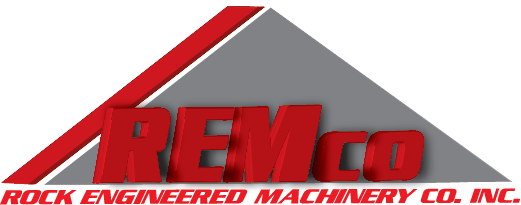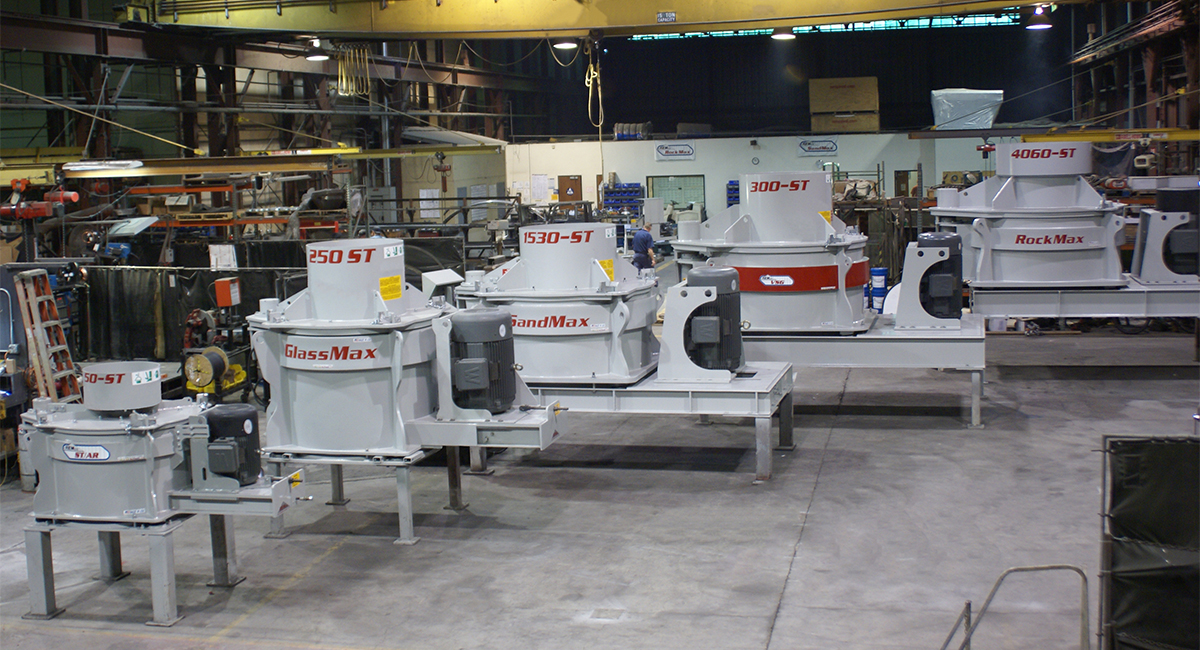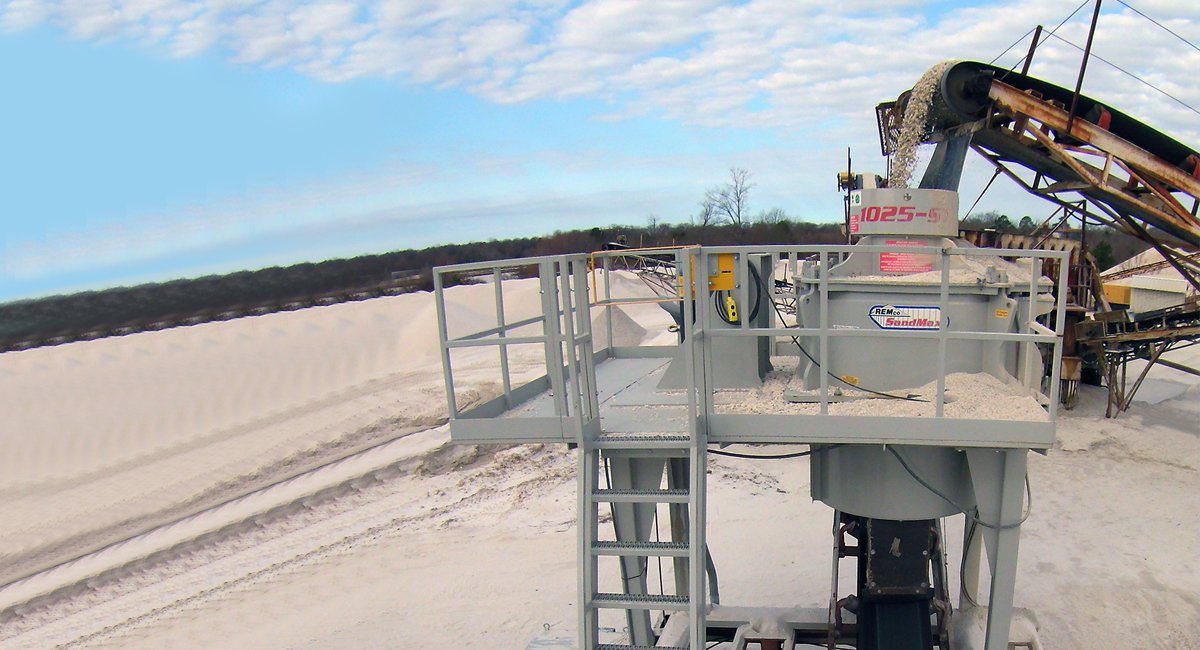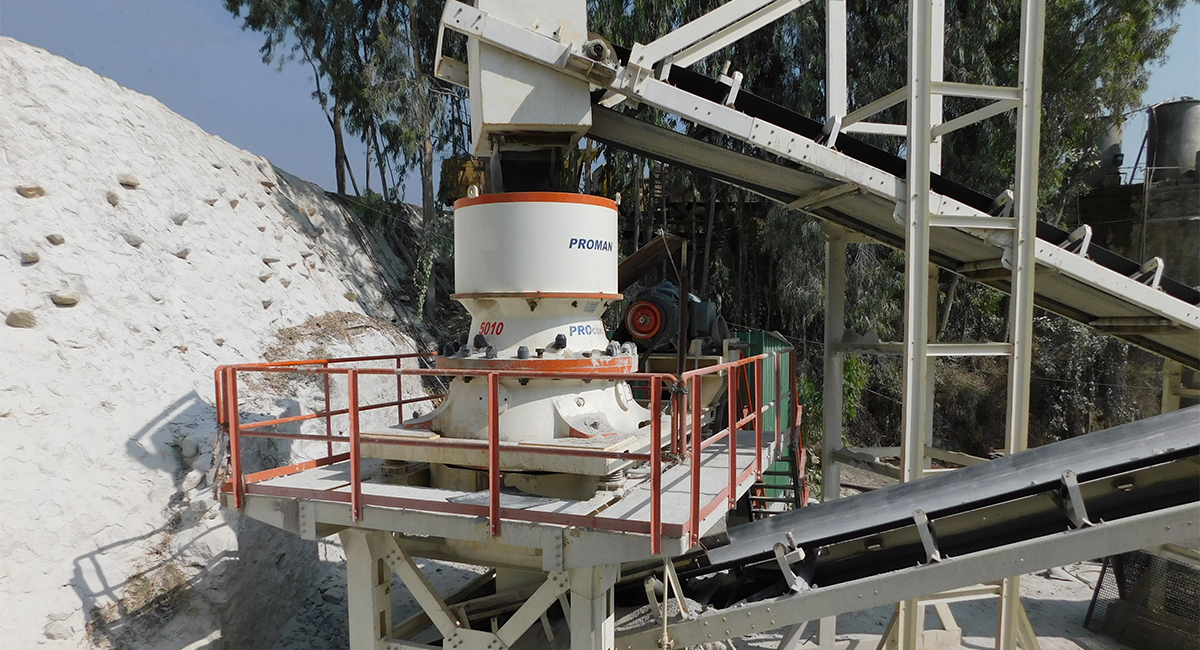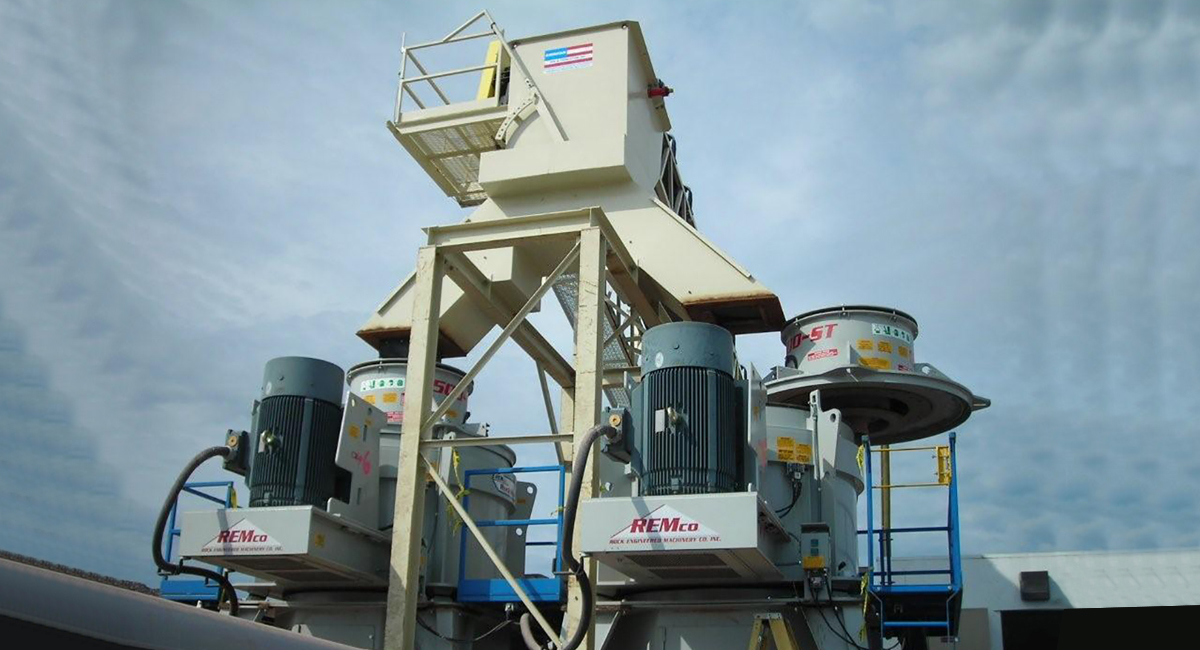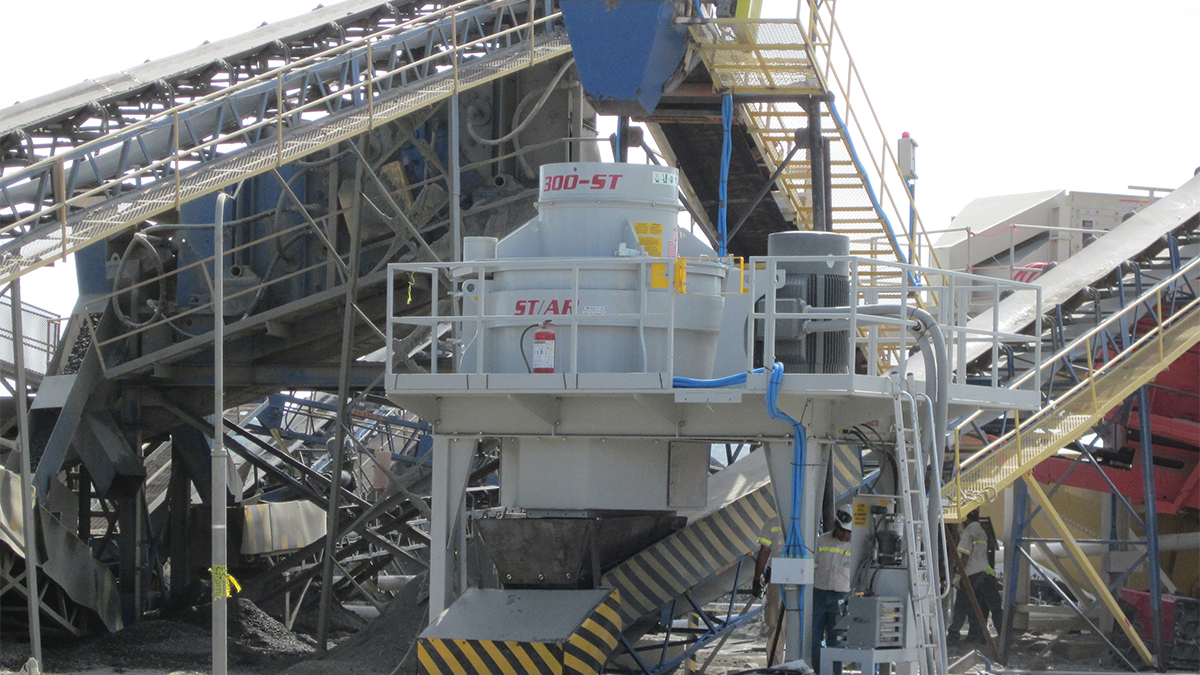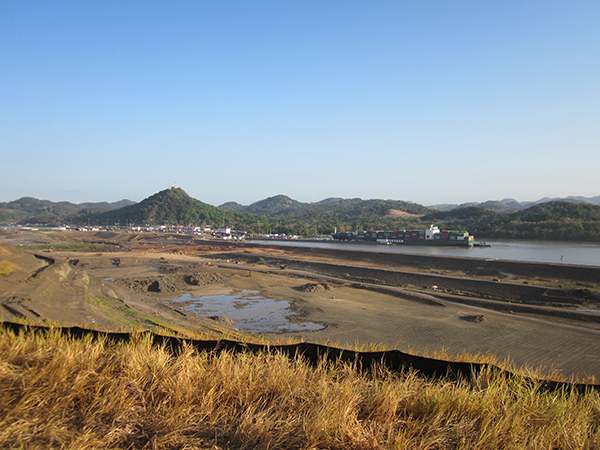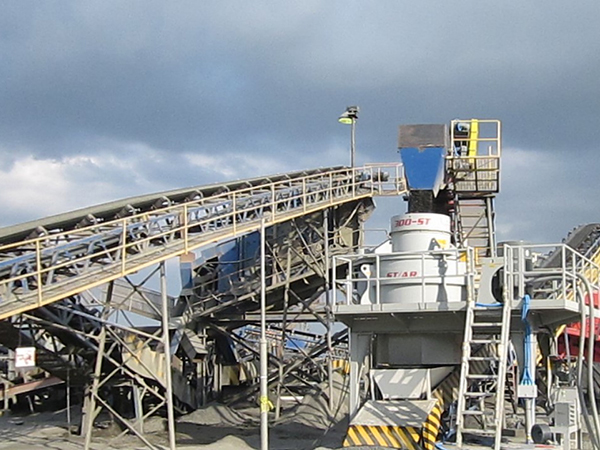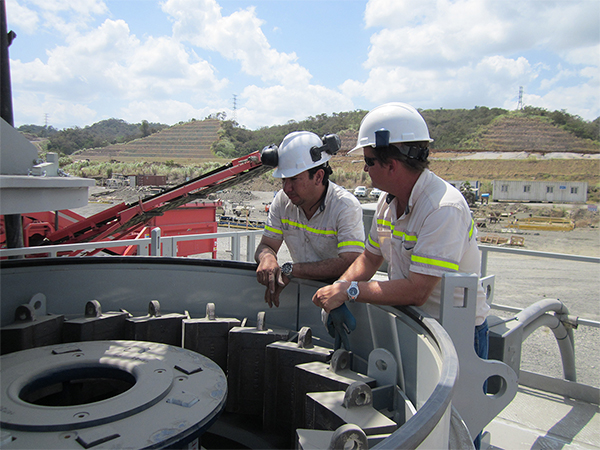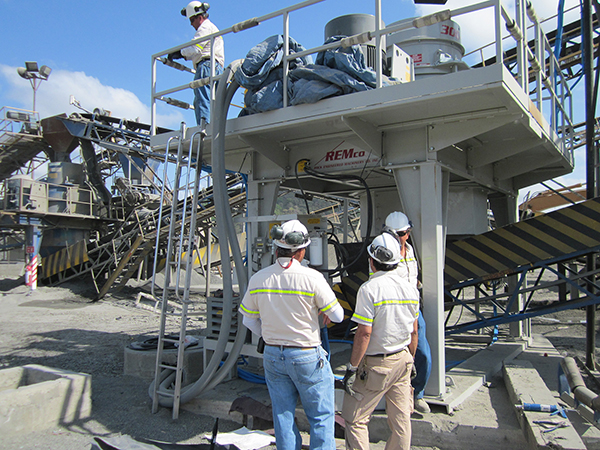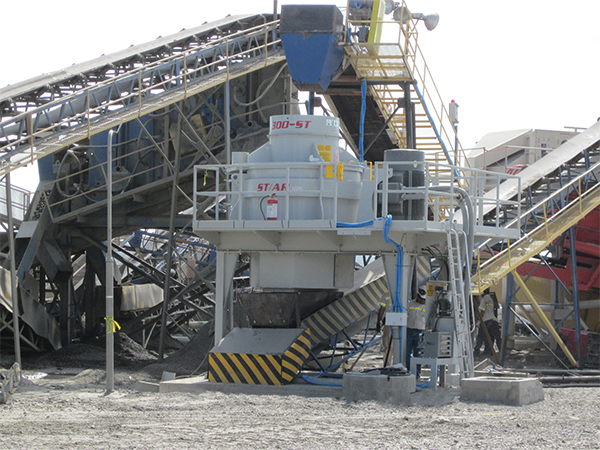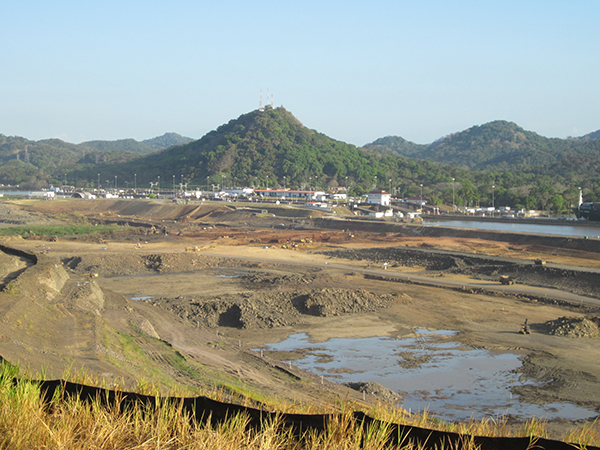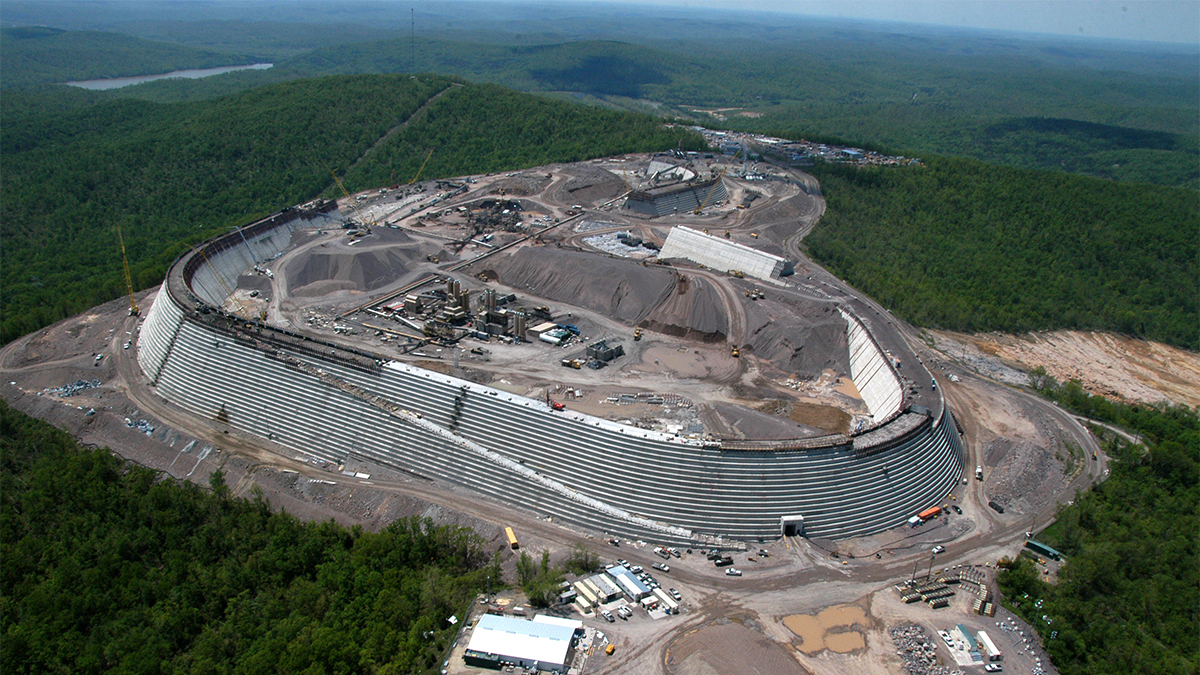Recent Stories
REMco showcases VSI Series 310 at ConExpo-Con/Agg 2017
By Allison Barwacz | April 3, 2017
REMco President Kevin Cadwalader discusses the company’s REMco VSI Series 310 at ConExpo-Con/Agg 2017. Get a rundown on the machine.
Crushing tech instrumental to producing a high-end sand
“For us, it’s quality over quantity,” Hayden says. “We’re not a high-volume operation like typical sand plants. Instead, it’s all about timing. That’s crucial, and REMco has designed these crushers to operate very efficiently.”
Crushing tech instrumental to producing a high-end sand
By Carol Wasson | May 4, 2018
Renowned for its pure white manufactured sands, The Hayden Group of Sheridan, Arkansas, provides crushed quartz sand to high-end golf courses throughout the South, Midwest and beyond.
The company is blessed, as it says, with the local abundance of “a brilliant quartz” that’s mined year-round at an 800-acre operation.
Because the bright white sand is such a spectacular, radiant contrast to the emerald greens of the golf course, the product is highly coveted.
“We sell it as soon as it hits the ground,” says Will Hayden, COO for the company.
As seen on TV, The Hayden Group’s Premier White sand “is kicked up on bunker shots” at PGA Tour courses.
“Golf course superintendents like the aesthetics of the sand, plus its superior drainage and packing capabilities,” Hayden says. “The players say the golf ball sits high on the sand, making for an easier, better shot.”
To meet an ever-growing demand, the company recently upgraded and expanded its crushing operations. Two of its three crushing plants employ advanced-technology vertical shaft impact (VSI) crushers that deliver higher durability and uptime, ease of maintenance, lower wear part costs, best particle shape results, and greater production output.
“Bottom line, our new VSI crushers have allowed us to nearly double our daily and annual production output,” Hayden says.
Crushing upgrades
Hayden credits the company’s success to the unique mineral properties of their deposit, efficient washing and screening operations, a little luck with the weather, and importantly, a 5/8-in.-minus feed material that’s cost-effectively pulverized into a superior manufactured sand by the company’s new VSI crushers.
“The way these crushers process this feed material is a big part of what makes our finished product one of the top three bunker sands in the U.S.,” Hayden says.
Manufactured by REMco, a Series 1025 SandMax VSI crusher with a 150-hp motor was installed at the Hayden operation in 2016, with a second unit purchased shortly thereafter for a new plant.
The REMco headquarters, its North American manufacturing operations and its materials-test crushing facilities are located in Livermore, California.
“For us, it’s quality over quantity,” Hayden says. “We’re not a high-volume operation like typical sand plants. Instead, it’s all about timing. That’s crucial, and REMco has designed these crushers to operate very efficiently.”
According to Hayden, his company’s first new 1025 SandMax VSI replaced an older REMco 5500 SandMax that was installed in 2002.
“We got more than 15 years of reliable service from that machine, and yet we found that we could extend its service life by applying it to a different and less abrasive application,” he says, explaining that The Hayden Group formed another new plant and a new application around the older REMco crusher, which currently processes a smaller, less abrasive top size feed to produce “a more affordable linen-colored golf sand.”
The linen-colored golf sand presents a new and growing profit center for the company, Hayden says.
At its two main plants, the new SandMax VSI crushers process all of the Premier Sands, as well as a white pebble product the company sells to the swimming pool industry for high-quality, crystal-like pool finishes.
Each of the company’s crushing plants operates in a closed circuit, allowing the operation to easily attain a consistent flow rate on every product that’s processed.
State-of-the-art tech
Advanced VSI technology allows these new crushers to cost-effectively surpass the tonnage of older models, adds Mike Howell, central region manager for REMco.
From initial consultation through installation and operation, Howell supplies ongoing support to producers throughout his region. Howell stresses that new rotor and chamber technology is key to advancements that boost productivity.
“REMco has designed its VSI with a two-step, tapered rotor boss that’s bolted-on and removable,” he says. “This essentially protects and preserves the longevity of the rotor itself. The new VSI also features a tighter crushing chamber that’s engineered to significantly increase production.”
According to Howell, the SandMax’s rock-on-rock crushing chambers are more closed and achieve a denser particle cloud within the crusher. This allows for a greater concentration of the crushing energy, which produces a finer discharge.
“This high-crushing velocity reduces material recycle and increases production capacities of a desired finished product with the best particle shape results,” Howell says.
The Hayden Group’s new VSI also effectively manufactures a highly desired cubical product, Hayden says. This is a big advantage when producing the white pebbles for the swimming pool industry.
“The VSI rounds off the pebbles in a way that helps applicators apply the materials to a pool finish in a far more efficient way,” he says.
Ease of maintenance
Additionally, the reduction of maintenance downtime and labor contributes to The Hayden Group’s productivity. Hayden particularly likes the hydraulic lift incorporated into the VSI.
“Older-style crushers required the costly and time-consuming use of a crane to lift off the crusher lid,” Hayden says. “Removing the lid from our new VSI takes about five minutes. It makes it so fast and easy to do inspections.
“While an older-style crusher required frequent manual greasing of the bearings, the new VSI uses oil lubrication for the bearings,” he adds.
The Hayden Group has also experienced reduced wear part costs on the new VSI. When operating competitive models, the company typically replaced wear parts on a weekly basis, Hayden says.
“Now, we get more than 200 hours on our wear plates,” he says. “We do replace our tips weekly, but that only takes the crew about 10 minutes to do.”
The Hayden Group experienced user-friendly operation with its new VSI crushers from the start, Hayden adds. The installation of the new crushers was seamless with the use of REMco’s modular installation kit.
“While a crusher might take up to two days to install, the kit cut our basic installation prior to electrical hook-up to under seven hours,” he says.
For The Hayden Group, the new tech has resulted in nearly doubling the number of truckloads of finished product per day while also doubling the total tonnage of saleable products per year.
“We had record-setting sales last year, and 60 to 70 percent growth rates in the demand for our main product lines,” Hayden says.
Flying High With a VSI
Fine-crushing hard basaltic rock for making asphalt sand and C33 sand for ready-mix concrete is a tough job.
Flying High With a VSI
By Carl Emigh
Fine-crushing hard basaltic rock for making asphalt sand and C33 sand for ready-mix concrete is a tough job. This is what now makes up about 30 percent of the overall production at BoDean Co.’s Mark West Quarry near Santa Rosa, Calif. “That’s business we never had before,” said Director of Production Bill Reid. “And we’re planning to expand our production capabilities to meet growing market demands. Adding manufactured sand to our product mix is one of the best business decisions we’ve ever made. It kind of evolved over time.”
The quarry opened in 1910 and was run by various operators until BoDean purchased it in 1989 and updated and replaced the quarry’s existing equipment and systems. For several years, the quarry successfully produced base rock and two sizes of drain rock. At that point, making sand was 10 to 15 years in BoDean’s future, but never far from their minds.
“When we first took over the quarry, it was very vertical, with large faces,” Reid said. “The quarry is located on a steep hillside. We were mining rock 400 ft. above our plant. We had to do a lot of benching – that is, cutting flat ledges into the hillside to form what we called ‘work benches’ where we could drill and blast the basaltic rock. When we finished with an area, we would drop down to a lower level and cut a new work bench.
“As we came down the hillside, we ran into some water, clay and broken up rocks from time to time,” he continued. “We had to learn how to handle that to maximize our resource. But for the most part, we were crushing and screening relatively dry material. Over the years as we started thinking more and more about making sand, we knew disposal of clay and wash plant water would be a major problem because we have no room for settling ponds at our cramped vertical site.”
The Mark West Quarry, equipped with a jaw crusher, horizontal impact crusher and dry screening system, was very successful at that time. Base rock and drain rock were their main markets. But market demands were volatile, changing yearly or even monthly. They saw the next shift in the aggregate industry moving toward asphaltic and concrete rock.
Also, Sonoma County, along with other counties in California, was telling aggregates producers to stop taking alluvial gravels from rivers and streams. That further increased demand for certain types of crushed aggregates. The quarry’s product mix at that time included drain rocks and base rocks.
Enlarging the Quarry
In 1994-1995 BoDean decided to enlarge the Mark West product line by including rock that could be used in asphalt and concrete products. “To fulfill all our fluctuating demands efficiently,” Reid said, “we developed a system with swinging product gates that provided diversification with one simple plant. That took a lot of creative engineering and design. But it means we didn’t have to change screens each time we changed product lines. While the fine crusher produced an abundance of the small 3/8-in. chip, it did not produce enough of the sand product. Both of these products were not being produced in the right shape – it was too long and flat. So the fine cone crusher was replaced with a REMco 9000 rock-on-rock vertical shaft impact crusher.
“The jaw-cone-VSI system with dry screening enabled us to produce our existing product mix plus the asphaltic material with a very good cubicle shape,” Reid said. “This added to our product sales potential, and overall we had better quality products with greater durability and workability at lower production costs. Further, it added to our tph capabilities and cut maintenance time and expense significantly. Plus, we were a step closer to making sand.
“With this equipment and system we operated very successfully for a number of years,” Reid said. “But since we were so dependent on contracts that can come and go, we decided to enter into the asphalt business ourselves, and purchased an asphalt plant nearby. At first we were buying sand for the plant from an outside local source, and that was working out. But the sand source began to dry up. Sand was becoming more expensive, and the supply was sporadic. We were at the mercy of our suppliers, some of whom were our competitors. So we knew we were going to have to take control of our own destiny and make sand.
“Further, we thought it was potentially very profitable,” Reid said. “But we still had to solve the problem of disposing with wash plant water and clay waste. The rock we mine contains 15 percent to 20 percent clay, or cake, as we call it. With no room for settling ponds, we had to find a good way to deal with the cake if we wanted to make sand. So we did our homework.”
BoDean checked out various solutions, including belt presses to move waste off site, but nothing seemed quite right. Then they found a plate press system from Europe that enabled them to stack the cake and bring it back up the hillside. There it was mixed with overburden and placed in the reclamation project required for all quarries by California law.
“That was our ‘aha’ moment,” Reid said. “At that point we knew we could make sand efficiently at this quarry site. We were jubilant. Our next challenge was to determine how to revise or add to our existing plant to produce the sand. Again, we went to REMco. They’re the sand experts. We liked that they know all there is to know about cone crushers versus VSI crushing capabilities. In the process, we looked at a lot of numbers – a premium plant versus more economical plants – what would the payback be? We chose the premium plant, and the payback has been about four years.
“In addition to a wash plant, we installed a REMco 400 SandMax. The result has been everything we’d hoped for. We make top quality sand, including spec sand products, very efficiently in terms of production, capital cost, wear parts cost, and balancing production to meet market demands. Further, REMco gives a production guarantee on their equipment; so we went into sand making with great confidence. It’s one of the wisest business decisions we’ve ever made at this quarry."
Crushing Circuit
Plant Superintendent Anthony Boyle explained the crushing circuit, consisting of a primary plant with a feeder and jaw, and a secondary plant with a cone crusher, a REMco SandMax, and three screens that combine to produce all the various aggregate products and sand needed for market demands.
Incoming material is deposited by front-end loaders onto a vibrating grizzly feeder and fed into the jaw crusher. From there, the crushed material goes to a surge pile with an underground reclaim tunnel, equipped with two belt feeders, to feed the secondary plant with a 7- x 20-ft. three-deck screen.
Here aggregate is separated out: the smallest is ½-in. minus. Everything else goes to the secondary cone or tertiary VSI. Then it is collected on a common belt that feeds to a closed circuit system that consists of a 6- x 20-ft. three-deck screen, a 6- x 20-ft. two-deck screen, and the cone and VSI. From there, the material can go to individual stockpiles or to a blending belt. This blending belt feeds a stockpile/surge pile that feeds the wash plant.
Under the surge pile is a reclaim tunnel with a belt feeder that feeds a quality control screen that eliminates clumps. The material then goes to the blade mill (for agitating and scrubbing) and on to a 7- x 20-ft. triple-deck horizontal screen. It then moves to stockpiles or back to the REMco 400 VSI and on to the blade mill in closed circuit. The smallest material goes to a sand pump to a cyclone to a dewatering screen to final stockpile as C33 spec sand at higher than 3.1 FM.
“We use a cyclone instead of the much larger sand screws because of our lack of space,” Boyle said. “We found that the gradation consistency is beautiful. And with two VSIs in the system, we have all cubical product – nothing flat or elongated – and we’ve eliminated oversize and out-of-balance material.”
After supplying their own asphalt plant with sand, BoDean still had an abundance of sand to sell to other markets. They determined that the best market for their purposes was ready-mix concrete, but producers resisted.
“They were so used to the super smooth alluvial sand that they felt manufactured sand wouldn’t finish well,” Reid said. “They thought it would leave marks, would be rough, would be unstable, and wouldn’t pump well.
“We pointed out that manufactured sand was being used all over the world,” Reid continued, “But they still resisted. We tried several ready-mix suppliers, but to no avail. So we did our own test pours, using the concrete for our own equipment footings, and that worked very, very well. We offered to give sand to concrete companies to try out, but they didn’t want it. It was like they had a mental block.”
“We saw that as a chance to go into the concrete business ourselves; so we became affiliated with a ready-mix concrete company,” Reid said. “That was in 2010, and it has been a great opportunity for us. The only difference we see between concrete made with alluvial sand and manufactured sand is a little bit of our natural stone color once it dries. Otherwise, there’s no difference. Manufactured sand is at least as good as natural sand, sometimes better. And what’s more it’s available when natural sand is in short supply or is too expensive. The ready-mix companies we’re partnering with are selling concrete for finishing and everything else: bridges, overpasses, buildings and so on. The strength is high, and there have been no issues.”
“A lot of times problems are lead-ins to opportunities,” Reid said, and pointed out some examples:
- As electric costs soared, they experimented with solar power at their offices in 2007. That worked well; so they installed solar panels on a reclaimed hillside to power the entire quarry. That has saved us a lot of money and has ecological benefits. Now other California aggregate companies are trying solar and/or wind power.
- They don’t have room for settling ponds; so they found a neat, efficient way to use waste material as part of the reclamation process. It’s far better than messy, mucky, hazardous settling ponds, and it will save them money over time.
- Same with manufactured sand. You ask the great majority of quarry operators and they’ll say it can’t be done successfully. Well, we’re doing it very successfully. And it’s a huge market. But usually it can’t be done with a quarry’s existing standard crushing equipment like primary jaws and cones or primary horizontal impactors and cones. They found the VSI to be the solution.
- They’re selling all the sand they can make. Currently their run time is 65 hours a week with about 700 tph from the jaw crusher, 500 tph from the cone and VSI combined, and about 80 tph from the SandMax. They can only run the sand plant long enough to digest the waste mud. So they’re planning to expand their reclaimed water system to double run time.
“To any quarry operator who thinks making sand is a can of worms, I’d say it’s more like a can of opportunity,” Reid said. “Just do your homework, talk to manufactured sand experts, then make the investment and reap the profits you’re not getting now. It’s a big market. There’s room for us all.”
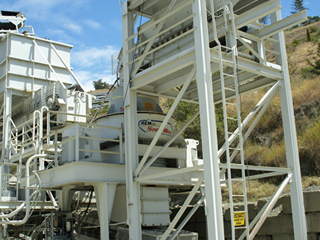
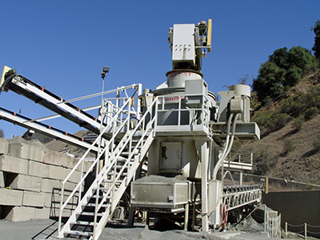
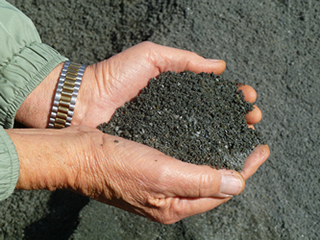
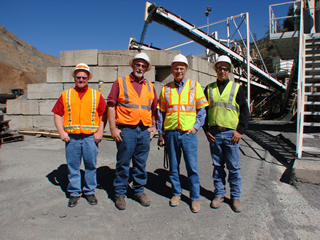
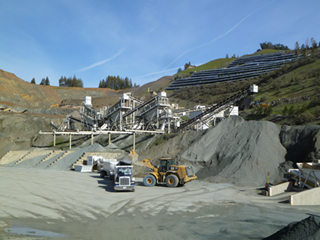
REMco Expands
March 7, 2014 - At ConExpo-Con/Agg, REMco announced that it has expanded its offerings to include jaw and cone crushers.
REMco Expands
March 7, 2014 - At ConExpo-Con/Agg, REMco announced that it has expanded its offerings to include jaw and cone crushers. According to General Manager Kevin Cadwalader, REMco's new products, sourced from India, will be supported with an extensive parts inventory based at the company's California location.
Time to Get Crushing
REMco VSI RockMax crushers are autogenous vertical shaft crushing machines designed to operate as third stage crushers in the processing of all types of rock, ores, and minerals. RockMax crushers can be operated in either open or closed-circuit.
Time to Get Crushing
By Mark S. Kuhar and Josephine Patterson | May 30, 2018
REMco
In the past, the limits on impact crushers have been their high cost to operate when the material is hard and abrasive. Historically, hard rock such as granites, quartzite and other materials with high abrasives content have caused severe wear on the crushing members of vertical shaft impact crushers making them prohibitively expensive to operate. REMco VSI RockMax crushers are autogenous vertical shaft crushing machines designed to operate as third stage crushers in the processing of all types of rock, ores and minerals. RockMax crushers can be operated in either open or closed-circuit. Closed-circuit operation is recommended in order to achieve the lowest net operating cost, best particle shape and the highest production. RockMax crushers are intended for producing crushed products between 1 ½- to 3/8-in.
Past Projects You Might Recognize
2017 Remco Crushers At the Top of the World
REMco is an innovative crusher manufacturer with multiple patents on it VSI crushers making its machines desirable for a systems integrator and OEMs for use in their plants.
2017 REMco crushers at the Top of the World
2017 REMco Crushers at the Top of the World
REMco is an innovative crusher manufacturer with multiple patents on it VSI crushers which make its machines desirable for a systems integrator and OEMs for use in their plants. One such company is Australia’s Gekko Systems. Recognized for their award-winning Gekko-Python system, a modular ore concentration plant can be easily shipped and assembled almost anywhere in the world. With a high profile, remote project on the line, Gekko turned to REMco for VSI expertise. Working with Gekko engineers, REMco produced and supplied crushers with features unique to their project that helped make it a success. Today, REMco VSI crushers are in operation, processing gold ore at the top of the world.
Gekko, Gekko Systems, and Python have registered trademarks of Gekko Systems.
TMAC is a registered trademark of TMAC Resources.
Gekko is a company dedicated to driving change in the global minerals processing industry.
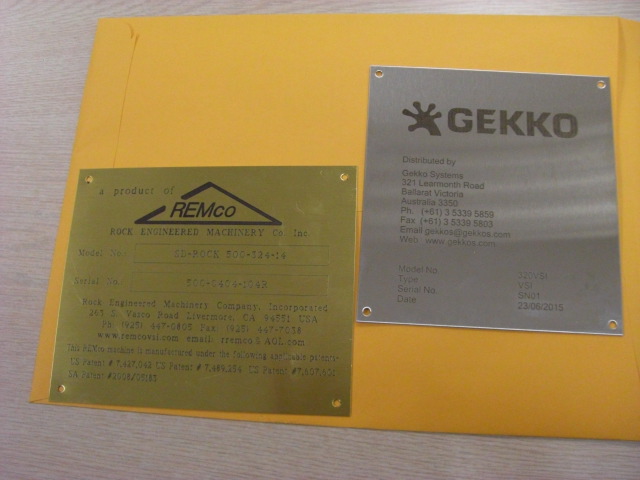
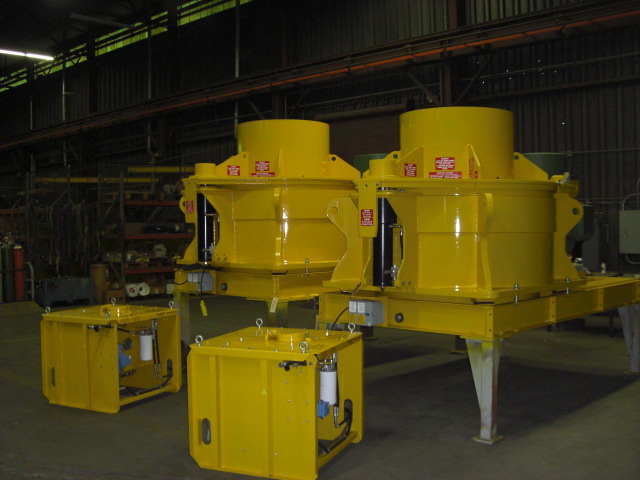
2007 TAUM SAUK RCC Dam Construction
After 3.5 million cubic yards of RCC, worries about aggregate shape are just a memory. “These Machines did an exceptional job with regards to F&E.”
100% American-Owned REMco Is your ONE-STOP FINE Crushing Solution Since 1983
Balance your plant production by turning stockpiled material into high-quality sand with the right FM, grading and finish to satisfy your customers' needs.
